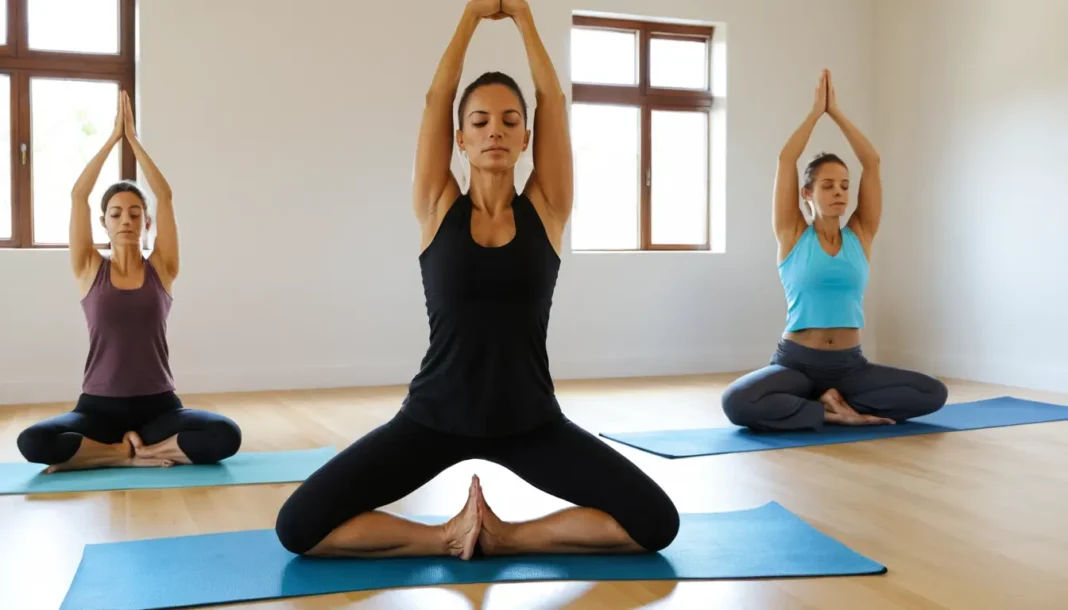Introduction.
Somatic yoga is a unique and transformative practice that combines the principles of yoga with mindfulness and body awareness. Unlike traditional yoga, which often focuses on physical postures and alignment, somatic yoga emphasizes internal sensations, movement, and the connection between mind and body. It’s about tuning in, slowing down, and fostering a deeper connection to yourself.
What is Somatic Yoga?
At its core, somatic yoga is about moving from the inside out. It integrates gentle, mindful movements with awareness of how each posture feels in the body. Rather than forcing the body into a position, somatic yoga invites you to explore your body’s natural movement patterns. This practice helps release tension, improve flexibility, and restore balance, but it also offers profound mental and emotional benefits.
The Mind-Body Connection in Somatic Yoga
One of the key aspects of somatic yoga is the emphasis on mindfulness. It encourages you to focus not just on the external postures, but on how your body feels during the practice. By cultivating awareness of your body’s sensations, you can release deep-seated tension and stress. This mind-body connection can help reduce anxiety, improve mood, and promote a sense of peace and relaxation.
As you move through each posture, you’ll notice how your body responds. Maybe you feel a stretch in your shoulders or a deep release in your hips. These sensations are signals from your body that help guide you, allowing you to make adjustments and move in a way that feels good for you. This level of awareness is what sets somatic yoga apart from other forms of yoga.
Benefits of Somatic Yoga
Somatic yoga offers numerous benefits, both physical and emotional. For starters, it helps to reduce chronic pain and tension by releasing tight muscles and soothing the nervous system. If you suffer from back pain, neck pain, or stiffness in the joints, somatic yoga can be especially helpful in addressing these issues gently.
Additionally, somatic yoga improves flexibility and strength, but it does so without pushing the body too hard. The focus is on slow, mindful movements that help improve range of motion and increase circulation. This makes somatic yoga accessible to people of all fitness levels, from beginners to advanced practitioners.
But the benefits don’t stop there. Somatic yoga is also a powerful tool for stress reduction. The gentle movements and focus on breath work help calm the mind and activate the parasympathetic nervous system, which is responsible for relaxation. Over time, this practice can help you develop a deeper sense of inner calm and emotional balance.
How to Practice Somatic Yoga
If you’re new to somatic yoga, don’t worry—it’s simple to get started. The beauty of somatic yoga is that it’s not about achieving a perfect posture or holding a pose for an extended period. Instead, it’s about listening to your body and allowing it to guide your movements.
Start by finding a quiet space where you can move freely. You can practice on a yoga mat or even on a soft carpet. Begin by sitting comfortably or lying down, and take a few moments to connect with your breath. Close your eyes and gently tune into the sensations in your body.
Next, start with simple movements, like gently rocking your head from side to side or circling your wrists. As you move, focus on how your body feels—what areas feel tight or relaxed? What sensations arise? Allow yourself to move slowly, without rushing, and without judgment.
You can gradually incorporate more dynamic movements as you feel comfortable, such as twisting your torso or stretching your legs. Throughout the practice, remember to keep your movements slow and intentional. The goal is not to perform the postures perfectly but to engage with the process of listening to your body.
Somatic Yoga for Emotional Healing
Somatic yoga is not just about physical health—it’s also a powerful tool for emotional healing. By reconnecting with your body and becoming aware of its sensations, you may uncover stored emotions or memories that have been trapped in your muscles. This can be a deeply therapeutic process.
For example, some people report feeling emotional release during or after a somatic yoga session—this may come in the form of tears, laughter, or a sense of lightness. These emotions are often stored in the body due to past experiences or trauma. By moving through these sensations with mindfulness, you create space for healing and emotional release.
Somatic yoga can also help you process difficult emotions in a safe and supportive way. By tuning into your body’s signals, you become more in tune with your emotional needs, which can lead to greater self-awareness and emotional regulation.
Is Somatic Yoga Right for You?
If you’re looking for a yoga practice that’s gentle, restorative, and focused on healing, somatic yoga may be exactly what you need. It’s ideal for those dealing with chronic pain, stress, or emotional tension. However, even if you’re in good physical health, somatic yoga can offer a refreshing break from more intense forms of exercise.
It’s also a great practice for anyone looking to deepen their mind-body connection. If you’ve ever felt disconnected from your body or overwhelmed by the demands of daily life, somatic yoga offers a peaceful space to reconnect, relax, and recharge.
Conclusion.
Somatic yoga is a beautiful, holistic practice that nurtures the body, mind, and spirit. By focusing on body awareness and mindful movement, it provides a gentle path to healing, stress relief, and emotional balance. Whether you’re dealing with physical discomfort or simply seeking a deeper sense of calm, somatic yoga can help you find the peace and relaxation you deserve. So, take a deep breath, tune into your body, and let somatic yoga guide you toward greater health and well-being.
Also read this article : Zone 2 Cardio




